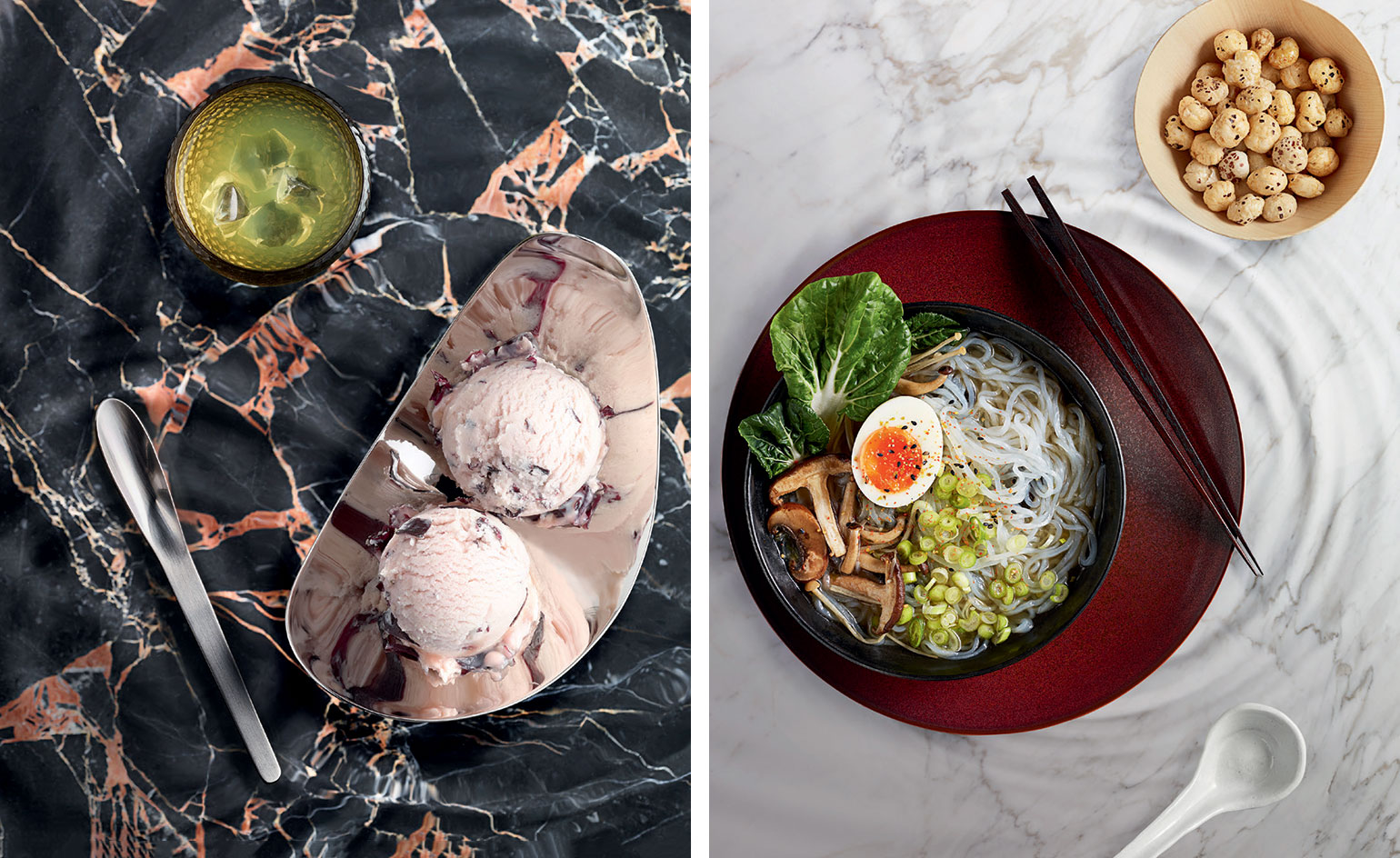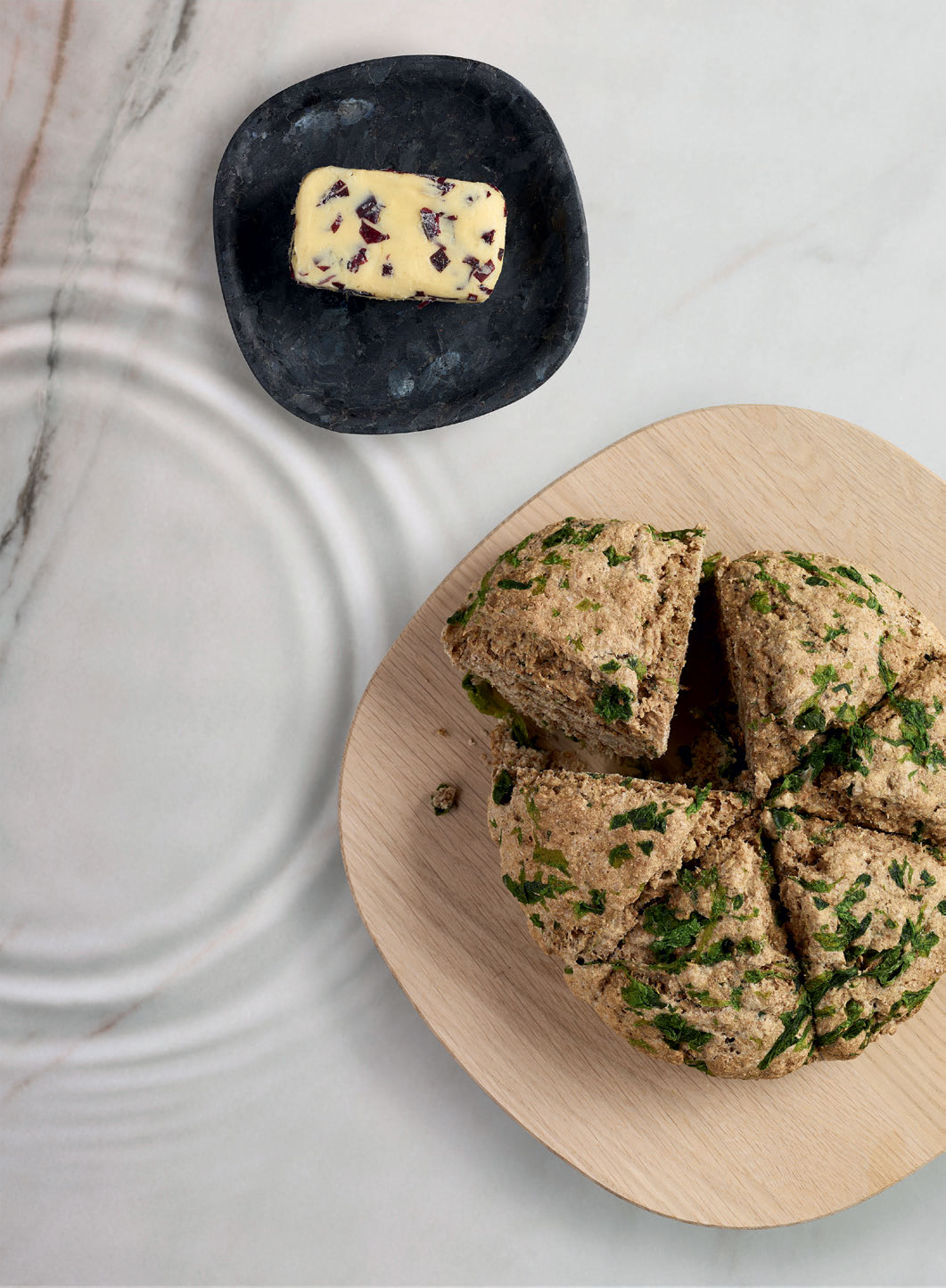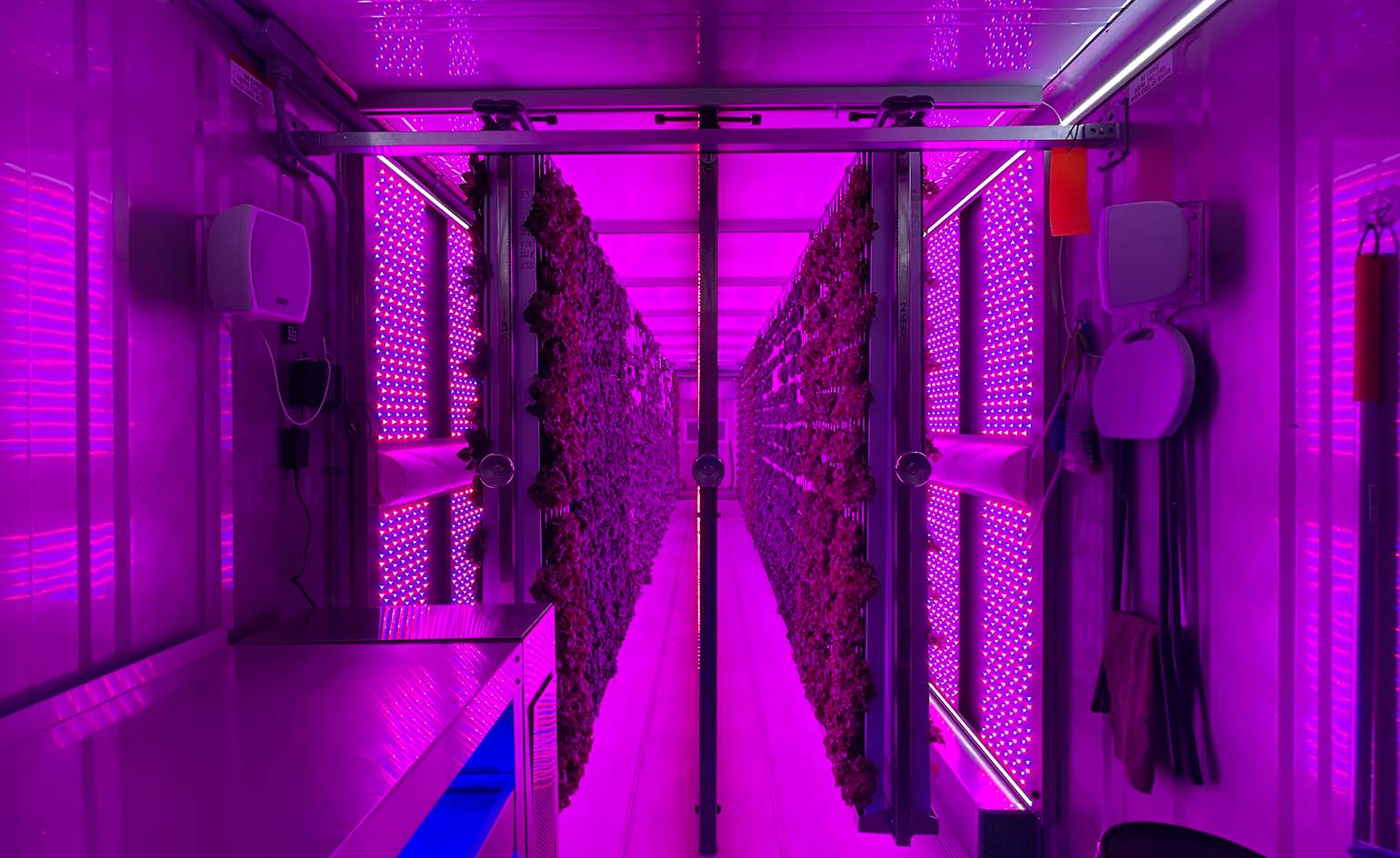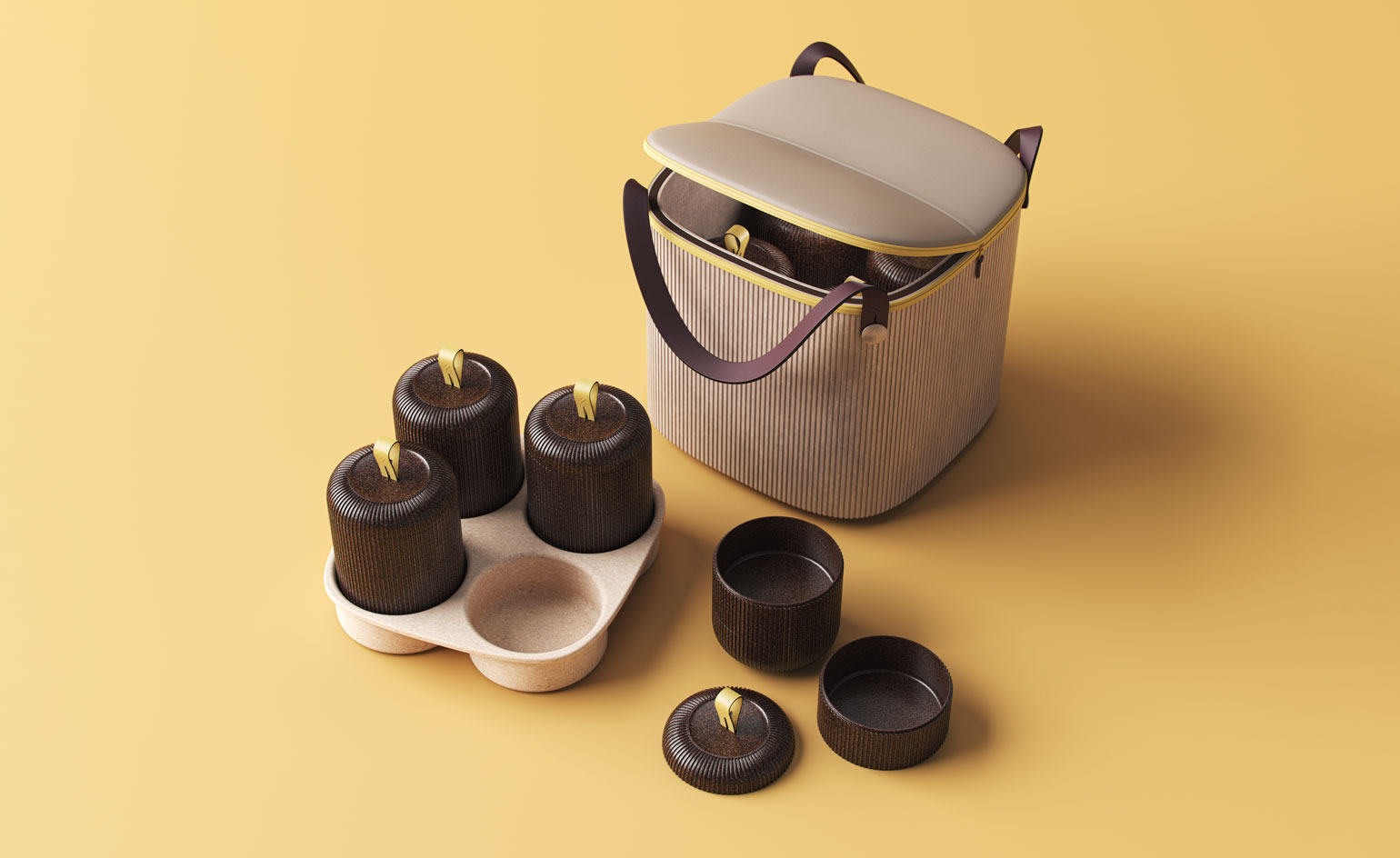Kelp mates: sea greens are gastronomic gold to palate-conscious planet savers

Environmentally-minded culinary explorers are diving deep to find alternatives to our standard veg. In some cultures, seaweed is a staple, but it is currently inspiring chefs globally to find new ways to put it on plates.
Not only is the growth of sea greens sustainable, the plants are often full of vitamins, essential minerals and protein, and they can pack a briny, umami-filled punch, making them gastronomic gold to the plant-based chef.

Seaweed soda bread with seaweed butter. ‘Essence’ bowl, £384; cutting board/platter, £75, both by Jenkins and Uhnger, for Lundhs Real Stone. Marble surfaces (throughout), from a selection, by Diespeker
Kelp noodles, which are gluten- and grain-free, are gaining traction in the allergy-afflicted West, while sea plants such as dulse, kombu, Irish moss and samphire are working their way into breads, salads, broths, and evendesserts (leave it to the neo-Nordics to come up with dulse ice cream, an invention of Copenhagen’s Nordic Food Lab).
Pork buns are given a salty injection with seaweed at London’s On the Bab, and plankton is worked into risotto at London’s Boro Bistro. And, while seaweed butter is being used to season bread and potatoes, it is also worked directly into pasta at New York’s High Street on Hudson, where you can enjoy seaweed bucatini served with lobster coral. Dive in.
Receive our daily digest of inspiration, escapism and design stories from around the world direct to your inbox.
-
 ‘I want to bring anxiety to the surface': Shannon Cartier Lucy on her unsettling works
‘I want to bring anxiety to the surface': Shannon Cartier Lucy on her unsettling worksIn an exhibition at Soft Opening, London, Shannon Cartier Lucy revisits childhood memories
-
 What one writer learnt in 2025 through exploring the ‘intimate, familiar’ wardrobes of ten friends
What one writer learnt in 2025 through exploring the ‘intimate, familiar’ wardrobes of ten friendsInspired by artist Sophie Calle, Colleen Kelsey’s ‘Wearing It Out’ sees the writer ask ten friends to tell the stories behind their most precious garments – from a wedding dress ordered on a whim to a pair of Prada Mary Janes
-
 Year in review: 2025’s top ten cars chosen by transport editor Jonathan Bell
Year in review: 2025’s top ten cars chosen by transport editor Jonathan BellWhat were our chosen conveyances in 2025? These ten cars impressed, either through their look and feel, style, sophistication or all-round practicality
-
 The sustainable farming innovator delivering to London homes and restaurants
The sustainable farming innovator delivering to London homes and restaurantsSustainable farming innovator Crate to Plate is pioneering fresh produce in London with the support of Michelin-starred restaurant Hide
-
 PriestmanGoode’s planet-friendly takeaway food packaging
PriestmanGoode’s planet-friendly takeaway food packagingOne year since the conception of PriestmanGoode's takeaway food packaging solution ‘Zero’ for Wallpaper* Re-Made, we find out how the project has developed
-
 Cooking Sections: visualising a responsible food industry
Cooking Sections: visualising a responsible food industryTurner Prize-nominated Cooking Sections explore how we can create and consume food more sustainably. Priya Khanchandani, head of curatorial at London’s Design Museum, talks to founders Daniel Fernández Pascual and Alon Schwabe about the politics of food, and fixing broken structures of consumption.
-
 Snarkitecture rethinks Pharrell Williams’ portable dining pod
Snarkitecture rethinks Pharrell Williams’ portable dining podMade from recycled CDs, Pentatonic and Pharrell William’s mobile dining kit is back with a stylistic update, courtesy of New York practice Snarkitecture
-
 Sustainable water bottles aiming to cap plastic waste
Sustainable water bottles aiming to cap plastic wasteOur picks of the best sustainable water bottles pair aesthetics with utility for sophisticated sipping
-
 Eat up Ancillary Equipment's radical food storage solutions
Eat up Ancillary Equipment's radical food storage solutionsNot only providing innovative alternatives to food storage, Ancillary Equipment is a manifesto to our uncertain, dystopian future
-
 Cook sustainably with SPACE10’s design lab recipe book
Cook sustainably with SPACE10’s design lab recipe book -
 New York City revamps the mini-mart, mindful of the modern snacker
New York City revamps the mini-mart, mindful of the modern snacker